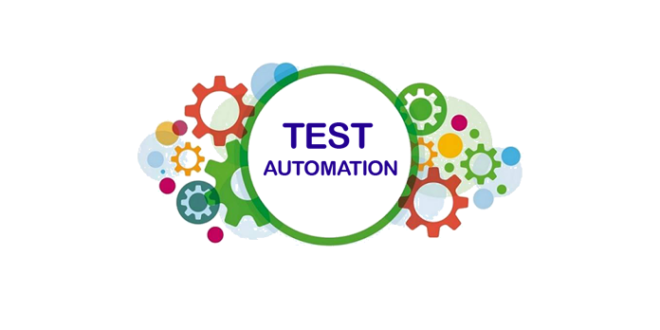Making Certain Success in Automation Checking: Secret Metrics, Challenges, and Solutions Every QA Team Need To Know
In the realm of software program quality control, the landscape of automation screening is ever-evolving, demanding a careful approach to make sure smooth operations. Secret metrics act as the compass guiding QA teams via the vast terrain of examination automation, losing light on progress and areas for improvement. Challenges loom huge, often casting darkness on the course to success. By comprehending these obstacles and carrying out reliable solutions, QA teams can navigate with intricacies with finesse. The journey to grasping automation screening is paved with nuances that need an eager eye for monitoring, analysis, and constant improvement. automation testing. As the market moves onward, the quest for ideal efficiency in automation screening remains a continuous search, prompting QA groups to equip themselves with the understanding and methods crucial for triumph.
Relevance of Key Metrics
Understanding the significance of essential metrics is essential for examining the efficiency and effectiveness of automation testing processes. Secret metrics serve as quantifiable procedures that provide useful understandings into various facets of the testing procedure, such as examination coverage, examination execution time, issue density, and examination situation efficiency. By examining these metrics, QA teams can recognize bottlenecks, inefficiencies, and areas for improvement within their automation testing structure.
One vital aspect of crucial metrics is their ability to track development and monitor the total health of the screening process (automation testing). They make it possible for stakeholders to make educated choices based upon data-driven insights, which can cause more effective screening techniques and far better resource allotment. In addition, key metrics can assist groups set practical goals, determine the success of automation campaigns, and show the ROI of automation testing initiatives

Common Challenges Faced
Challenges typically run into in automation testing procedures can significantly affect the total performance and effectiveness of QA teams. Automation screening might not cover all aspects of screening, such as use and individual experience testing, which still need hands-on intervention. Getting rid of these difficulties needs appropriate planning, calculated examination situation choice, durable maintenance procedures, appropriate resources, and a clear understanding of the restrictions of automation screening.
Efficient Solutions for Difficulties
To deal with the obstacles encountered in automation screening, carrying out efficient services is important for enhancing the performance and performance of QA groups. One crucial option is to purchase robust training programs for QA teams to guarantee they have the needed skills to effectively make use of automation devices. Training can connect knowledge voids, boost understanding of automation frameworks, and enhance scripting capacities, eventually resulting in more reliable test development and execution.
Another vital remedy is to develop clear communication channels within the QA team and with other stakeholders, such as developers and project supervisors. Efficient communication helps in straightening assumptions, sharing development updates, and promptly resolving problems or obstructions that might develop during the automation screening process.

Tracking and Analysis Strategies
Executing reliable tracking and evaluation techniques is vital for recommended you read guaranteeing the success and performance of automation screening procedures. Additionally, examining test outcomes and metrics gives useful insights right into the top quality of the software being examined and the effectiveness of the testing method.
One key method in surveillance and analysis is the use of control panels that settle appropriate metrics and KPIs in an aesthetically obtainable format. These control panels supply a comprehensive introduction of examination execution standing, examination coverage, problem patterns, and various other her explanation crucial details. Routinely examining and assessing these dashboards can help QA teams make notified choices, focus on tasks, and enhance screening initiatives.
In addition, applying automated alerts and notices based on predefined thresholds can improve positive surveillance and prompt intervention. By setting up notifies for performance variances or examination failures, teams can attend to problems without delay and stop them from escalating. Overall, monitoring and analysis techniques play a vital role in ensuring the effectiveness and success of automation screening campaigns.
Continuous Improvement Approaches
Enhancing the efficiency of automation screening processes necessitates the regular improvement of methods and approaches. Continual enhancement techniques are pivotal for QA groups to adjust to developing modern technologies and supply top notch software application products. One crucial method to enhancing automation screening processes is to perform routine evaluations and retrospectives. By analyzing previous testing cycles, groups can identify traffic jams, ineffectiveness, and locations for improvement. Executing feedback loopholes and incorporating lessons found out into future screening frameworks can produce significant renovations gradually.

Final Thought
Finally, it is crucial for QA groups to comprehend the key metrics, obstacles, and services in automation testing to make sure success. By thoroughly keeping track of and evaluating information, executing reliable options to common obstacles, and continuously boosting techniques, QA groups can enhance their screening processes and supply top notch software products. Sticking to these practices will eventually lead to a lot more effective and effective automation screening practices.
By examining these metrics, QA groups can identify bottlenecks, inefficiencies, and locations for improvement within their automation screening structure.
Additionally, key metrics can help groups set reasonable objectives, measure the success of automation efforts, and show the ROI of automation testing initiatives.
Obstacles commonly come across in automation screening procedures can substantially influence the overall efficiency and efficiency of QA teams. Automation testing might not cover all aspects of screening, such as use and individual experience testing, which still require hand-operated treatment.In verdict, it is important for QA groups to recognize the vital metrics, obstacles, and solutions in automation testing to ensure success.